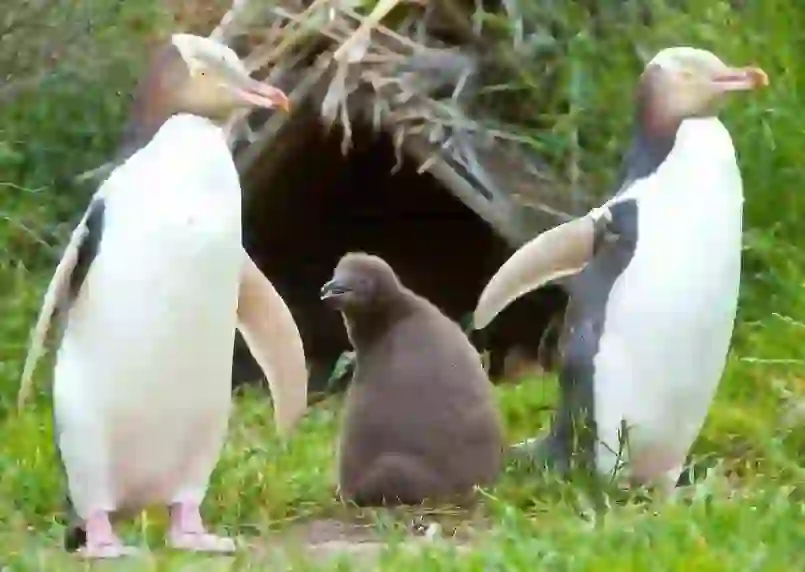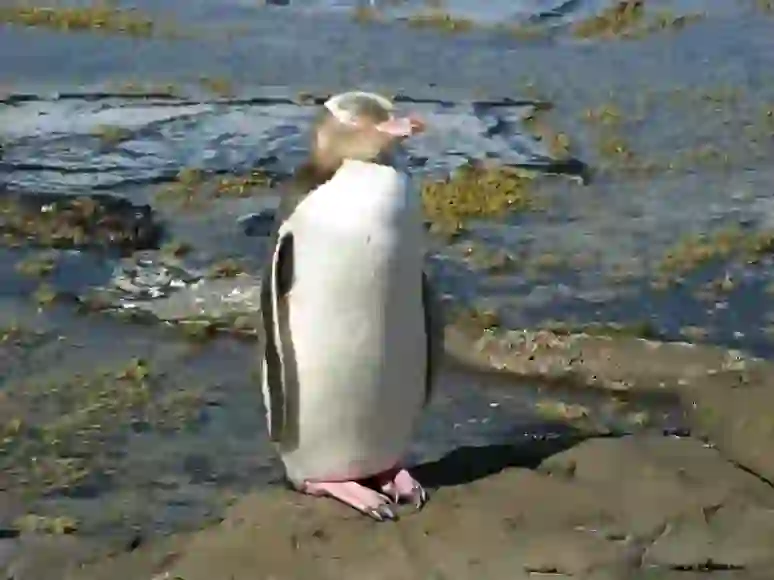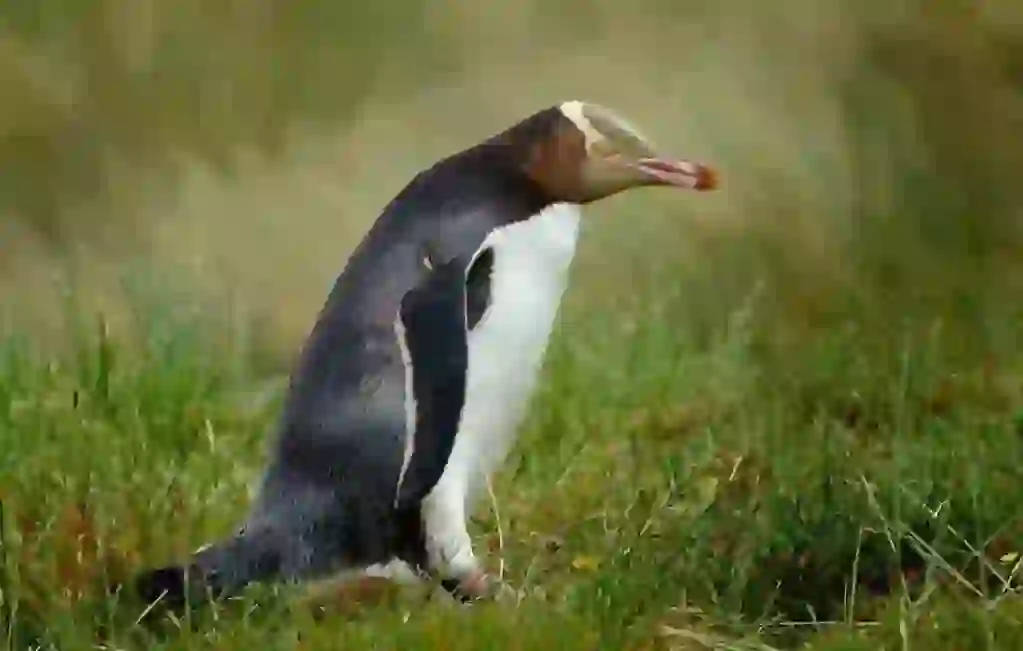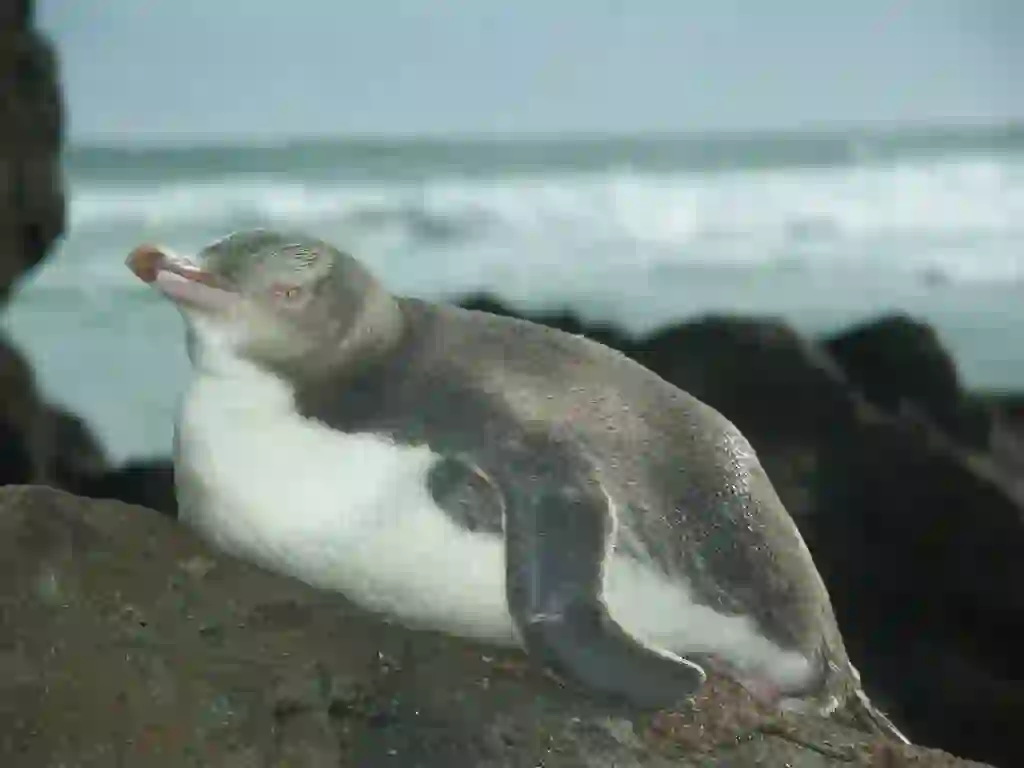
Yellow-eyed Penguin
Yellow-eyed Penguin
Yellow-eyed Penguin
Also known as the 'Resident of the Lost Forest'. This page introduces the yellow-eyed penguin, a rather unusual bird. Its head and eyes shine yellow, giving it a very mystical appearance. Interestingly, it is also depicted on the New Zealand five-dollar bill, making it the most famous penguin in New Zealand. How do they live and sustain their lives in a country so far from Japan? Let's delve into their secrets!
Yellow-eyed Penguin Basic Infomation

Order: Sphenisciformes, Family: Spheniscidae, Genus: Megadyptes
Length: 65–78 cm
Weight: Males: 8.5 kg, Females: 7.5 kg (early molting), Males: 4.4 kg, Females: 4.2 kg (late molting)
Bill length in adults living on the Otago Peninsula: Males: 21.5 cm, Females: 20.6 cm, Bill diameter: Males: 5.5 cm, Females: 5.3 cm
Estimated population: 3,400 individuals
The yellow-eyed penguin is also known as 'hōiho' or 'yellow-crowned penguin' and is unique in its genus Megadyptes.
The back side is covered with black feathers, and the throat and abdomen side have white feathers. Its most distinctive features are its bright golden eyes and clearly yellow feathers on its head.
The bill is reddish-brown, and the legs are pink. Males and females have the same appearance, which makes them difficult to distinguish, although males are generally larger.
Breeding starts around September-October in the islands of southern New Zealand. Nests are often built under dense vegetation or fallen trees, 300m to 1km from the sea. After nest completion, males display courtship behaviors, and if a female responds favorably, they become a pair and mate.
Females typically lay two eggs, and the parents alternate incubating the eggs every two days. The total incubation period lasts 39-51 days.
After hatching, both parents equally feed the two chicks. The parents usually hunt for food at dawn and return to the nest in the evening.
Unlike other penguins, yellow-eyed penguins do not form crèches (nursery groups). Their nests are well hidden in forests, protecting chicks from aerial predators.
Chicks grow rapidly and are ready to fledge 106-108 days after hatching. At fledging, the chicks are covered with down, which is gradually replaced by adult feathers. The young birds' head remains dark until they mature and gradually turns yellow.
Yellow-eyed Penguin Q&A

What is the origin of the name 'Yellow-eyed Penguin'?
The name literally comes from the bird's yellow eye surroundings. Another name, 'Hōiho', which means 'noise maker' in Maori, reflects the loud calls it makes.
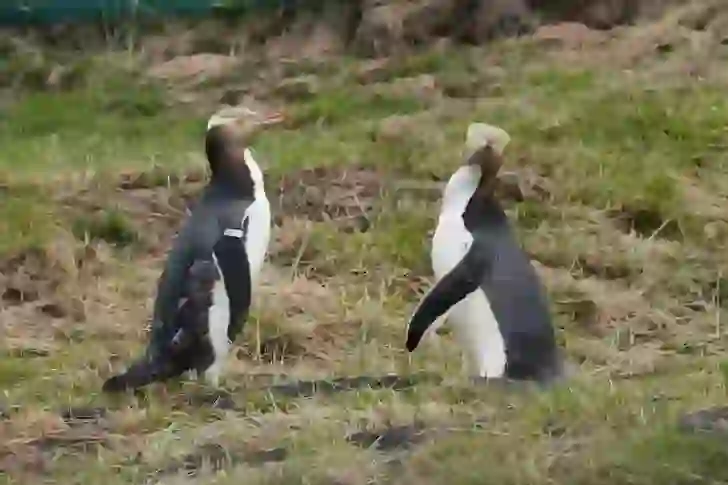
Why do yellow-eyed penguins live there?
Yellow-eyed penguins primarily breed and nurture their young on the southeastern coasts of New Zealand's South Island, such as the Otago Peninsula and Stewart Island. Sub-Antarctic locations also include breeding sites, mainly the Auckland and Campbell Islands. While the exact reason for their preference is unclear, it is suggested that the availability of food, such as small fish, around these islands may be a factor in their breeding location choices.
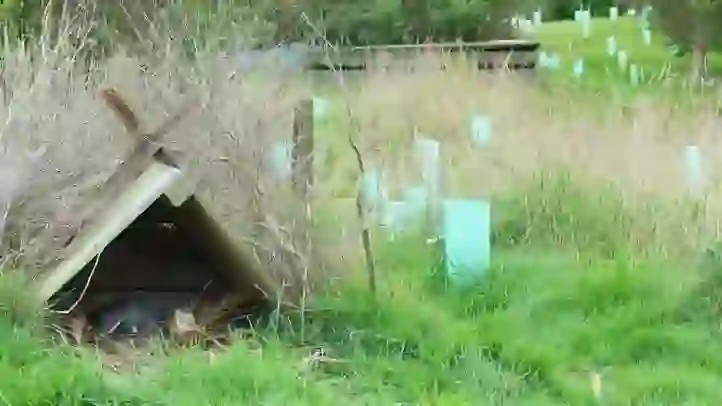
What do yellow-eyed penguins eat?
They dive into the ocean to eat small to medium-sized fish, such as sprat and opalfish. Occasionally, they also eat squid. Chicks are fed predigested fish by their parents.
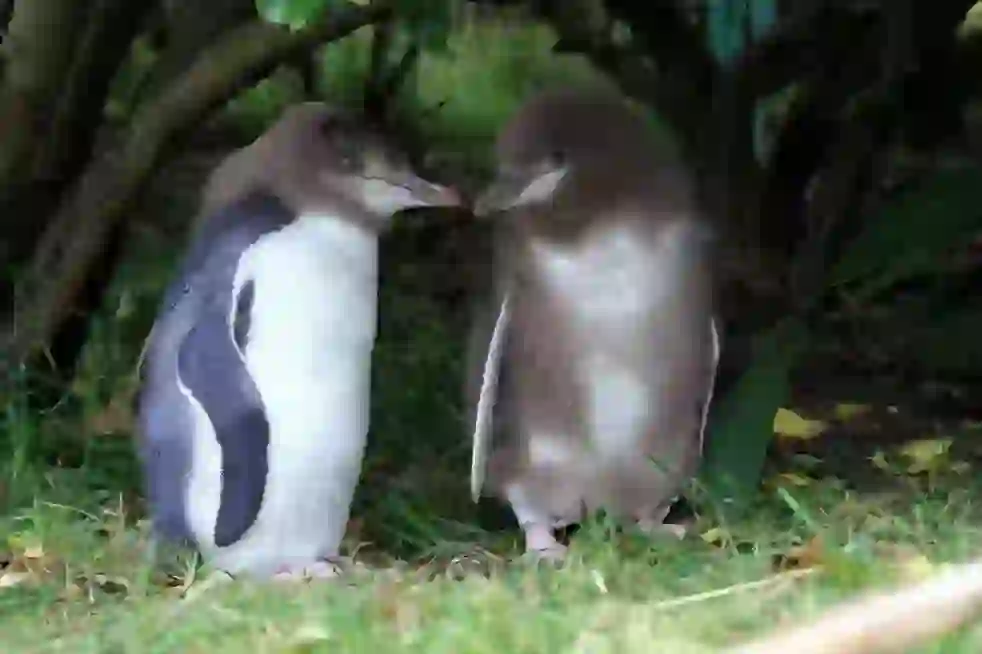
Do yellow-eyed penguins dislike colonies?
True, yellow-eyed penguins usually nest at intervals of about 150 meters to ensure privacy, unlike most penguins that nest in dense colonies. Interestingly, if another couple attempts to nest too close, the first couple might move to a new location to maintain privacy.
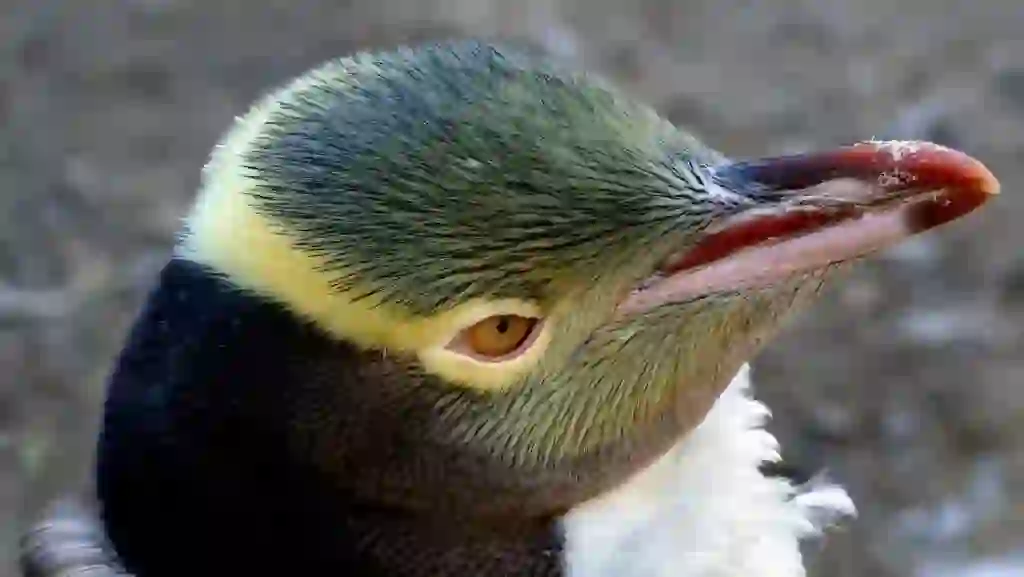
What does the yellow-eyed penguin sound like?
Their calls are high-pitched, trumpet-like, often described as 'kee-kee'. The term 'Hōiho' is also used for these penguins in Maori, meaning 'noise shouter', reflecting their vocal nature especially during mutual displays when parents return safely from the sea to their nest.
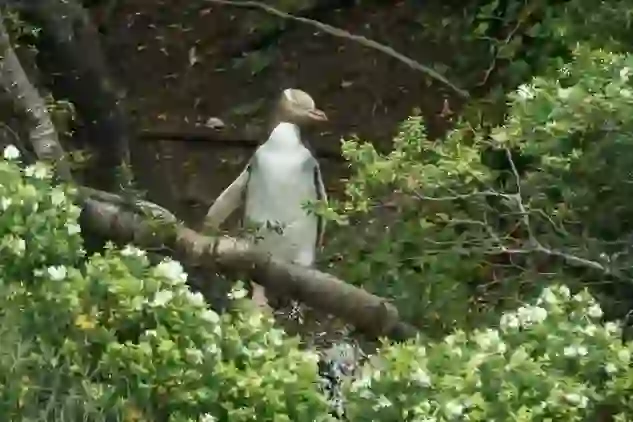
Can you tell me more about the personality of yellow-eyed penguins?
Yellow-eyed penguins are sensitive and cautious. They avoid close contact with humans and can suddenly leave their young to fend for themselves, prompting the parents to search and call for their missing chicks. They are gentle, but males can become aggressive when defending their territory or females, using loud calls and physical displays.
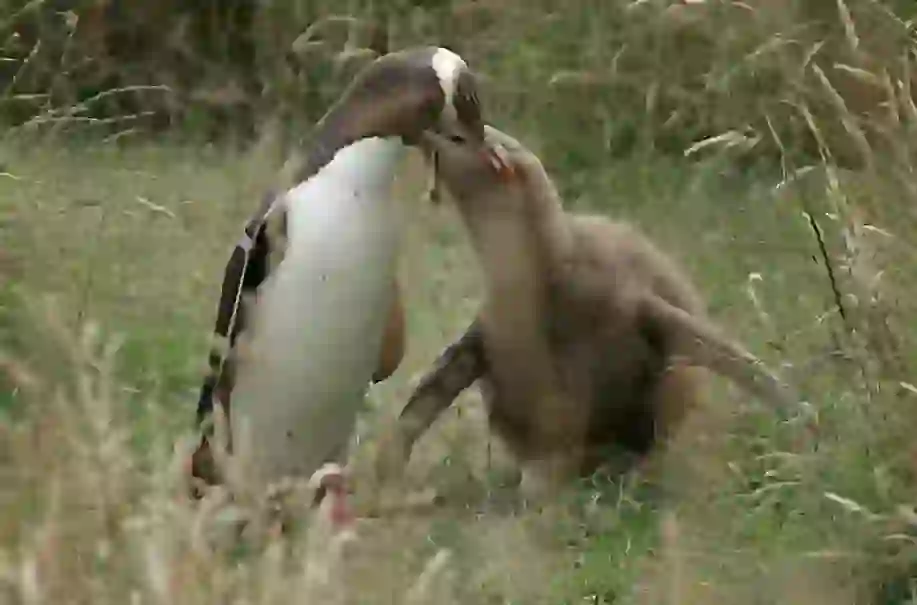
Where can you see yellow-eyed penguins?
Unfortunately, as of 2021, there are no places in Japan where yellow-eyed penguins can be seen. However, joining tours in New Zealand that include penguin viewing can increase the chances of seeing them.

Do yellow-eyed penguins have natural predators?
Natural predators include seals and sea lions. Feral cats and ferrets also pose a threat, especially to chicks. Ironically, the greatest threat to their survival has come from human activity, which has led to habitat loss and introduced predators.
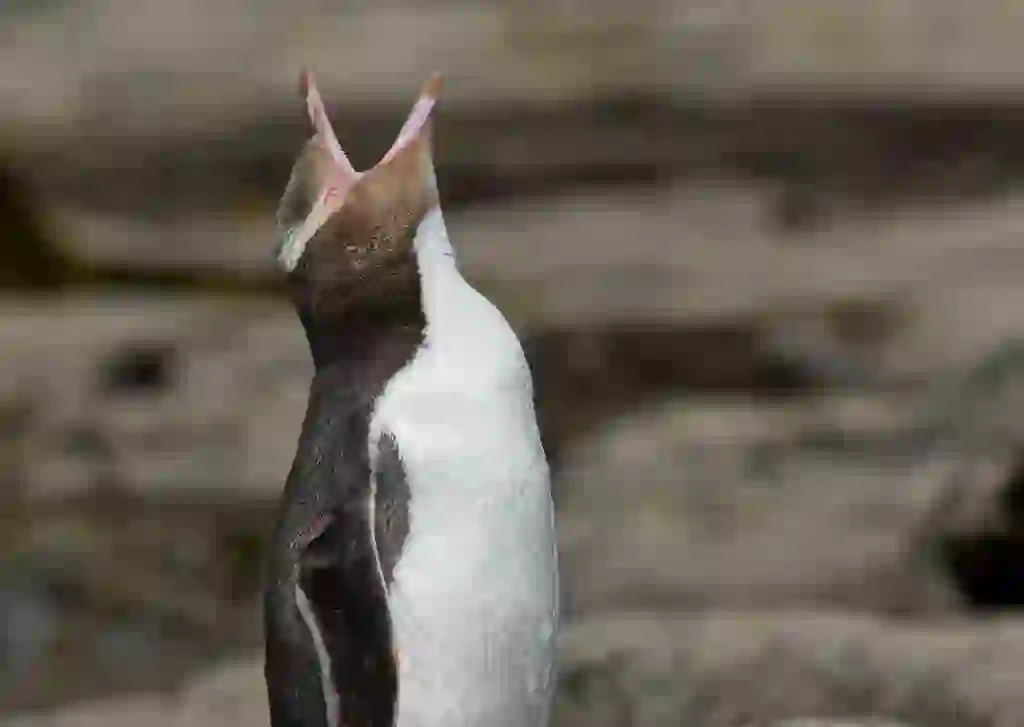
What is the lifespan of a yellow-eyed penguin?
In the wild, yellow-eyed penguins can live up to 20 years under harsh natural conditions.

Would you like to become a part of the 'Animalbook.jp'?
Turn your knowledge into Q&A and share it with the world. ※Publication will be activated after purchase. Let's share information together!
Yellow-eyed Penguin Type of List
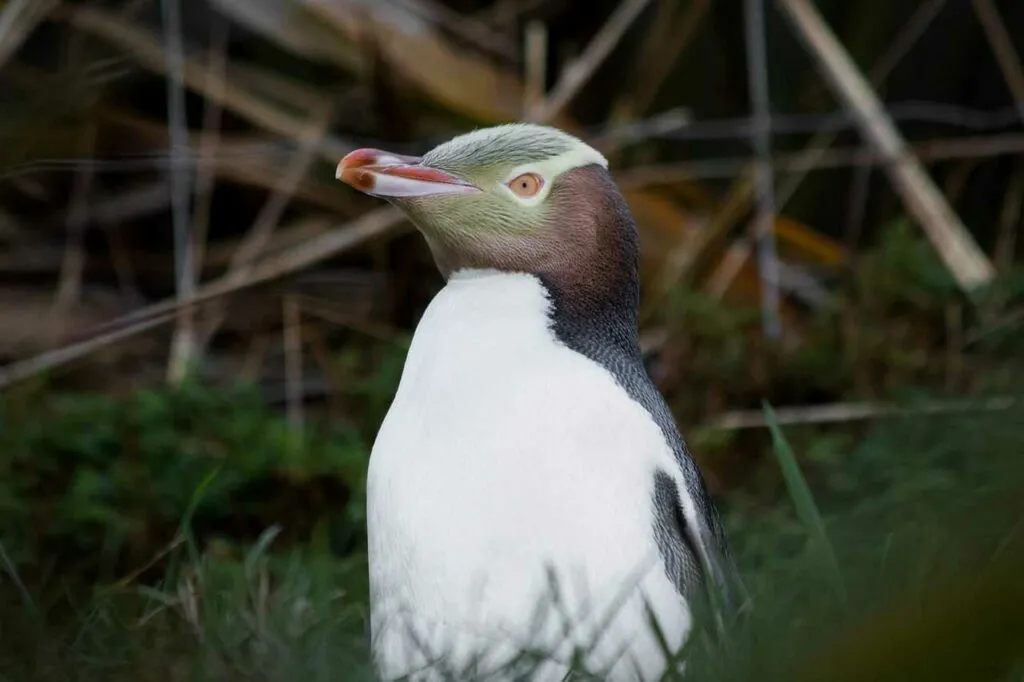
- Yellow-eyed Penguin
Information
Congratulations! You are the first commenter!

Create Your Favorite List!
Yellow-eyed Penguin
Save the animals you love! Build your own list to quickly revisit your favorites later.

Would you like to leave a comment?
※Please note: This is for the purchase of rights to post comments within the article.
Find Your Favorites!
Our shop offers a unique and attractive selection of goods themed around various animals.
Yellow-eyed Penguin References
Yellow-eyed Penguin Introduction of media used
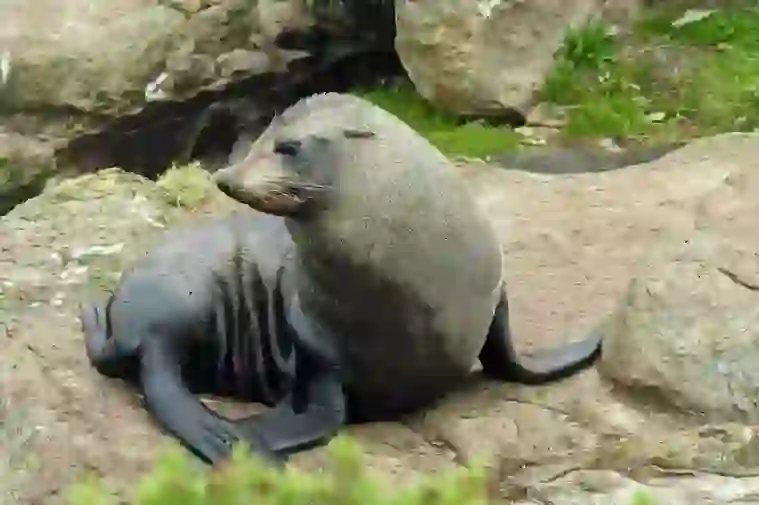
出典:https://pixabay.com/images/id-2138415/
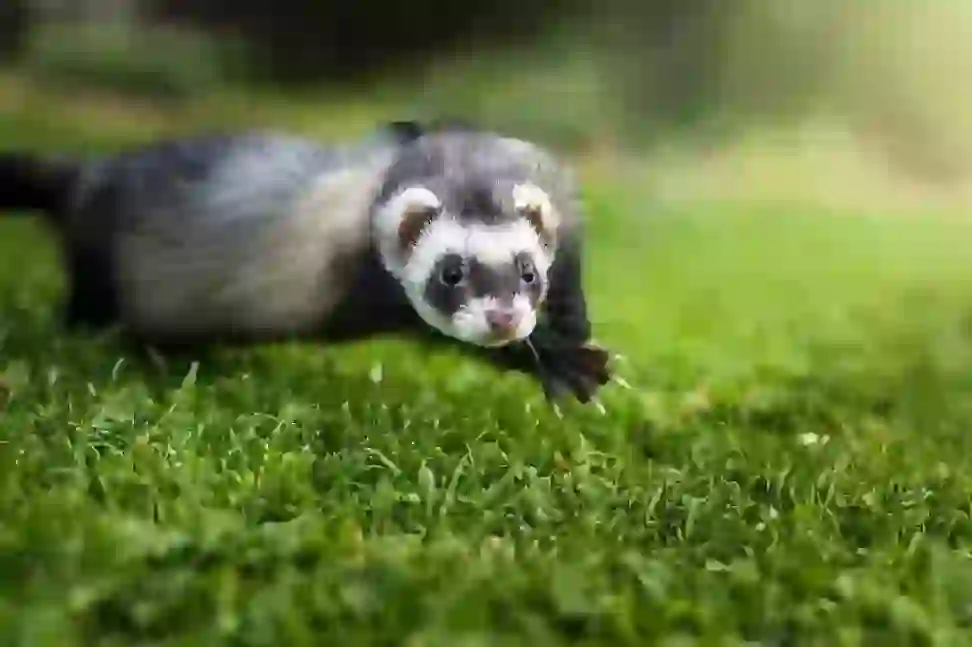
出典:https://pixabay.com/images/id-4534480/

Help Enrich Our Animalbook.jp with Your Media!
We are constantly looking to expand and enrich our Animalbook.jp with amazing photos and videos of animals. If you have any media that you'd like to share, please contribute and help us showcase the beauty and diversity of the animal kingdom. Your submissions will be credited and featured in our encyclopedia, reaching a wide audience of animal lovers.
















